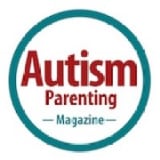This informal CPD article, ‘Everything You Need to Know About Autism Hyperfixation,’ was provided by Autism Parenting Magazine, who dedicate their time and energy releasing insightful digital magazines that help families across the globe navigate the challenges of the Autism Spectrum.
We often use the term hyperfixation to describe the intense, focused interests we see in autistic individuals. If you're a parent of an autistic child, understanding hyperfixation is important for supporting your child's unique needs and strengths. Because of that, it’s important to know what autism hyperfixation is, its impact, and practical strategies for managing it.
Understanding autism hyperfixation
Hyperfixation in autism is more than just a hobby or interest. It involves an intense focus on a particular subject or activity, often taking over the individual's time and attention to a large degree. Compared to interests the average person experiences, hyperfixation can stubbornly take over a person’s mind. This makes it challenging for the person to shift their attention to other tasks or activities.
ASD hyperfixation isn’t just a phase. It’s an engagement that shapes how individuals interact with the world. For example, a child might spend hours going into all the cookie flavours that have ever existed, having more knowledge about them than many adults.
These scenarios can be both fascinating and frustrating for parents trying to get the hang of the daily routines with their child.
Is hyperfixation the same as special interests?
Although hyperfixation and special interests are related, they are not the exact same thing. Special interests are common in individuals with autism and can be lifelong passions or a series of changing interests. For example, an autistic person may be passionate about Star Wars, but it doesn’t entirely distract them from doing their homework. They’ll talk about it for hours if given the opportunity, but not to the exclusion of other activities.
Hyperfixation, on the other hand, is characterized by an intense and often short-term focus that can disrupt daily functioning. In this case, the child may get distressed (more than the average child) if they have to stop their hyperfixation for chores, homework, or other stuff many would find fun.
This intense focus, while beneficial for building knowledge, can sometimes get in the way of other things key to a child’s development.
Signs of hyperfixation in autistic children
Common signs of hyperfixation in autistic children include:
- Intense focus on a specific topic or activity
- Sensitivity to change or interruption
- Persistent engagement, often at the expense of other activities
- Difficulty moving from one task to another, especially if the other task heavily leans toward the less preferred section of the interests spectrum
Picture a child who spends hours building highly detailed building block structures, unable to shift attention to dinner or bedtime routines. These behaviours show impressive dedication but also present challenges in balancing daily life.
Challenges and positives associated with hyperfixation
Although hyperfixation brings many challenges to the daily lives of children on the spectrum and their families, there are also some positives worth mentioning.
Challenges
- Inflexibility: Hyperfixation can make it hard for individuals to adapt to changes or new situations.
- Impact on daily life: The intense focus can interfere with daily routines, responsibilities, and social interactions.
- Educational and work challenges: Hyperfixation can affect performance in school or work by limiting attention to a narrow range of subjects.
Positives
- Deep knowledge and expertise: Individuals with hyperfixation often develop a profound understanding of their focused subject.
- Coping mechanism: Hyperfixation can serve as a way to manage stress and anxiety.
- Source of joy and fulfillment: Your child engaging deeply in a preferred activity can bring significant satisfaction and happiness, which may allow them to be more open to other activities.
Consider a student who is an expert in various math fields because of their hyperfixation on numbers. What started as a challenge, turned out to be an academic success thanks to the support and understanding of the people around them. This deep knowledge will not only give confidence but may also open doors to future career opportunities.
How to manage autism hyperfixation
You should manage hyperfixation by ensuring a balance of support and structure. Too much support or discipline regarding a child’s hyperfixations can make things unstable.
These strategies include:
- Setting boundaries: Establish clear limits on hyperfixation activity times. For example, you can allow the child to engage in their hyperfixation activity before supper but make sure they do the tasks they don’t prefer after.
- Encouraging flexibility: Slowly introduce new activities and interests to expose your child to more things. For example, if you’re watching a movie on DVD downstairs your child hasn’t seen before, ask the child to join you.
- Supporting transitions: Use visual schedules and clear communication to help with transitioning between tasks. Remember, the more concrete, the better the child will understand these.
- Making use of strengths: Consider putting the individual's hyperfixation into educational or work goals to improve engagement and productivity. If a child is fixated on historical figures, for example, relating these concepts to their social studies curriculum can keep them engaged.
This approach not only respects their interests but also allows them to be productive in fun, engaging ways.
Recognizing and supporting hyperfixation
Recognizing and appreciating the unique strengths that hyperfixation brings is crucial for supporting autistic individuals. While you will encounter challenges here and there, hyperfixation can also be a source of deep knowledge and joy.
By understanding and managing autism and hyperfixation effectively, parents, educators, and caregivers can indeed help individuals with autism grow in unexpectedly positive ways.
We hope this article was helpful. For more information from Autism Parenting Magazine, please visit their CPD Member Directory page. Alternatively, you can go to the CPD Industry Hubs for more articles, courses and events relevant to your Continuing Professional Development requirements.













